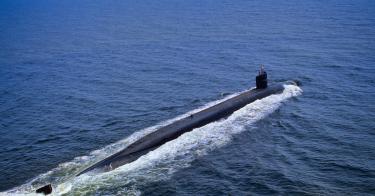On Aug. 12, Admiral Charles Richard, commander of U.S. Strategic Command, told us that we are witnessing a “strategic breakout by China.”
That same day, the Biden administration was reported to be considering delaying the Pentagon’s plan to modernize the United States’ Cold War-era nuclear forces. Worse, just a few days prior, House Armed Services Committee Chairman Adam Smith (D-Wash.) sent a letter asking Biden to consider reducing U.S. nuclear forces.
There’s a clear disconnect between the reality of the threat facing the United States and the Biden administration’s stated desire to reduce the role of nuclear weapons in U.S. strategy. While the left proposes to cut U.S. nuclear forces, the fact is there is a desperate need to reinforce our capability for nuclear deterrence.
Over the last month, reports of additional Chinese nuclear expansion have arrived almost weekly. Private analysts discovered three different sites where China is constructing over 100 ICBM silos each. A tunnel was also discovered that confirms China’s “active nuclear testing program”—a clear violation of the nuclear test ban.
>>> Getting Nuclear Posture Review Right Is Critical for U.S. Defense
Just last week, Admiral Richard made a series of alarming revelations about China: Its explosive buildup of ICBMs, its shift of some forces to higher alert status, and its growing number and diversity of its nuclear weapons, which enable it to execute virtually any strike strategy. As Mr. Richard’s put it, China now has the ability to unilaterally escalate “to any level of violence, in any domain, in any geographic location, and at any time.”
Combine all this with Russia’s growing nuclear capabilities, and it’s clear we find ourselves in an unprecedentedly dangerous threat environment, one in which the United States must now deter two nuclear peers simultaneously. That’s never happened in American history.
The Cold War was one thing. With the advent of nuclear weapons, the United States had to quickly figure out how to prevent nuclear war through concepts like mutually assured destruction between two states. That strategy succeeded in defusing dangerous scenarios like the Cuban Missile Crisis.
But the emergence of a third nuclear peer seriously complicates the deterrence calculus that America has employed for 75 years.
It’s so radically different that Admiral Richard stated that this situation warrants a “national academic undertaking” to figure out how to deter both powers. China’s breakout, he says, “is a cause for action.”
All this makes the suggestions by President Biden and Chairman Smith (one of the most powerful individuals in the national security apparatus) so inexplicable.
Our current nuclear forces—the Minuteman III ICBMs, B-52 bombers, Ohio-class submarines, and their accompanying warheads—were built during the Cold War. Some systems are over 50 years old, and all face risks of failure due to their old age.
Amid a Chinese strategic breakout, it’s hard to make sense of proposals to cancel the upgrades to these systems or reduce our nuclear arsenal’s size.
Among all their responsibilities, the one task we expect from our national leaders is for them to keep the country safe. And when the risk is nuclear war, is cutting down on our nuclear forces or allowing them to atrophy with age worth any savings in dollars or points to be scored with the liberal caucus?
>>> Why Biden Shouldn’t Make Concessions to Putin on Missile Defense
A clear-eyed assessment should instead result in the President examining options to accelerate the modernization of our nuclear forces.
The administration’s ongoing Nuclear Posture Review is where threats and capabilities are weighed to arrive at the posture best suited to protest American interests. In that process, Biden and his Pentagon can demonstrate leadership in the face of China’s strategic breakout. By aligning our nuclear forces according to the threat, he an show the world the U.S. commitment to defend our country, our allies, and the Western-led world order.
Only time will tell if this administration is willing to address the 21st-century threats head-on by giving America the credible deterrent needed to secure our safety in a three-peer-power world.
This piece originally appeared in The Washington Times



